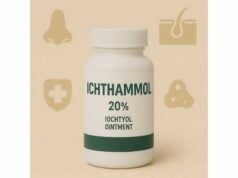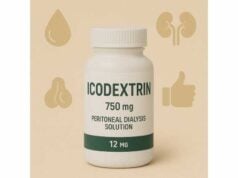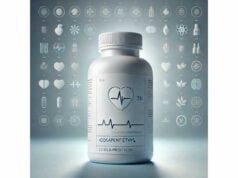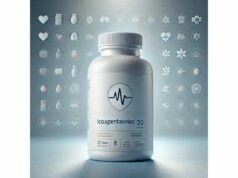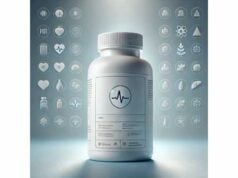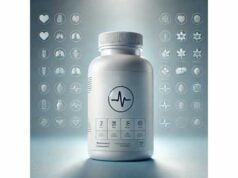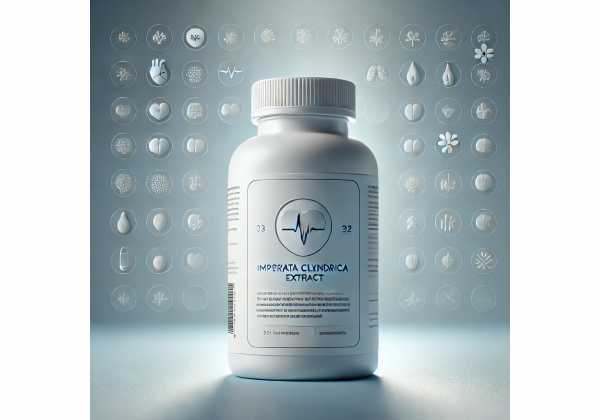
Imperata cylindrica—also called cogon grass or Bai Mao Gen—is a hardy rhizomatous grass with a long record in East and Southeast Asian medicine and, more recently, in cosmetic science. Extracts from its rhizome and root are used for urinary complaints and bleeding in traditional settings, while standardized root extracts now appear on skincare labels for long-lasting hydration. Laboratory studies have cataloged triterpenoids (such as arundoin and cylindrin), flavonoids, and polysaccharides with anti-inflammatory, gastroprotective, and immunomodulatory actions. A few human studies exist, but most evidence remains preclinical or formula-based. This guide gives a clear, people-first tour of what Imperata cylindrica extract can (and cannot) do today—how it works, which forms are used, how to try it safely, when to avoid it, and what to ask a clinician before adding it to your regimen.
Quick Overview
- Moisturizing root extract helps skin retain water in leave-on products; traditional rhizome use supports diuresis and cooling in formulas.
- Typical topical range: 0.5–3% Imperata cylindrica root extract in moisturizers; experimental oral extract ranges are lower (200–600 mg/day) pending trials.
- Safety caveat: potential diuretic action and unknown pregnancy data; choose reputable sources to avoid contamination.
- Avoid if pregnant or breastfeeding, if you have kidney disease, or if you take diuretics or anticoagulant therapy without clinical supervision.
Table of Contents
- What is Imperata cylindrica extract?
- Does it work and what are the key benefits?
- How to use it day to day
- How much should you take?
- Safety risks and who should avoid it
- Evidence and what is still missing
What is Imperata cylindrica extract?
Imperata cylindrica (cogon grass) is a C4 perennial grass native to tropical and subtropical regions and now naturalized widely. In traditional Chinese medicine (TCM), the rhizome (Bai Mao Gen) is used to “clear heat,” promote urination, and stop bleeding. In cosmetics, root extract is prized for water-binding and osmoprotective effects that support longer skin hydration. These are related but distinct use cases, and the part of the plant, extraction method, and standardized markers can differ.
Which parts are used and why
- Rhizome (Bai Mao Gen): decocted or granulated for internal formulas. Preclinical research attributes anti-inflammatory, gastroprotective, and diuretic activities to triterpenoids (arundoin, cylindrin), phenolic acids, and polysaccharides.
- Root extract (cosmetic grade): typically a water-glycerin extract standardized for potassium and compatible osmolytes. In vitro and ex vivo work suggests it helps keratinocytes maintain osmotic balance, indirectly boosting water content in the stratum corneum.
Key chemical families you will see on labels and in papers
- Triterpenoids: arundoin (fernane type), cylindrin, fernenol—often discussed in hepatoprotective and anti-inflammatory contexts.
- Flavonoids and phenolic acids: potential antioxidant and signaling effects.
- Polysaccharides: root and flower polysaccharides with immunostimulatory profiles in cell and animal assays.
- Mineral/osmolyte fraction (topical): notably potassium and compatible solutes that help the skin buffer osmotic stress (low humidity, surfactants, heat).
Forms you may encounter
- Crude rhizome slices or granules for decoction (traditional use under practitioner guidance).
- Standardized extract capsules or powders marketed as Bai Mao Gen; specifications vary and are not harmonized.
- Cosmetic INCI: Imperata Cylindrica Root Extract in moisturizers, serums, and masks—often combined with humectants (glycerin, hyaluronic acid).
Naming clarity
“Imperata cylindrica extract” on a dietary supplement label usually implies rhizome-based material, while “Imperata Cylindrica Root Extract” on cosmetics denotes a topical hydration active. When in doubt, check the plant part, extract ratio, and standardization markers. These details determine how you should use the ingredient and what benefits to expect.
Does it work and what are the key benefits?
Skin hydration (topical, cosmetic use)
Modern skincare borrows Imperata cylindrica root extract for its long-lasting moisturization profile. Mechanistically, it works less like a classic humectant and more like an osmoprotective booster: potassium and compatible solutes help cells balance water influx and efflux under dry-air stress, while formulations pairing Imperata with humectants (glycerin, hyaluronic acid) retain moisture longer. Clinical and ex vivo cosmetic studies using multi-ingredient formulas that include Imperata have reported meaningful improvements in hydration and wrinkle parameters over 4–8 weeks. Because these studies test finished products, the improvements can’t be credited solely to Imperata, but they consistently support its role as part of a hydration system.
Gastroprotection and “cooling” actions (traditional, research setting)
Network pharmacology, metabolomics, and animal models point to multi-target gastroprotective effects from the rhizome: modulation of inflammatory pathways, oxidative stress, and mucosal defense. This aligns with classical use for heat-related stomach discomfort and bleeding. Such findings are promising but still translational, not definitive for clinical outcomes.
Diuretic support (traditional signal with limited modern trials)
Older human work and abundant ethnobotanical reports highlight diuretic effects of Imperata preparations—consistent with its TCM categorization as promoting urination to clear heat and dampness. Contemporary pharmacology suggests triterpenoids and other small molecules could contribute. If you retain fluid or take diuretics, treat this effect cautiously and coordinate with your clinician.
Immunomodulatory potential (preclinical)
Purified polysaccharides from Imperata roots and flowers have shown immunostimulatory activity in vitro and in animal studies (e.g., macrophage activation, enhanced innate responses). This is an early-stage signal that invites exploration for functional-food or adjuvant uses, not a reason for self-medication.
Body composition (formula-based clinical evidence)
One double-blind, randomized trial investigated a three-herb powder containing Imperata cylindrica alongside citrus and evodia extracts; the formula reduced body fat mass over 12 weeks in overweight adults compared with placebo. Because it was a combination product, we cannot attribute the result to Imperata alone, yet it suggests compatibility and safety in a structured trial setting.
Anticancer and antimicrobial activity (preclinical only)
Imperata extracts and isolated constituents have demonstrated cytotoxic and antimicrobial effects in cell models. These data contextualize the plant in medicinal chemistry, but they do not justify clinical use for cancer or infection.
How strong is the evidence overall?
- Topical hydration: Practical and supported by formulation-level clinical and laboratory data; real-world users frequently report sustained hydration when Imperata is paired with humectants and occlusives.
- Internal use: Encouraging preclinical signals for gastrointestinal comfort, hemostatic support, and diuresis; limited human data and no consensus dosing standard.
- Takeaway: Good candidate for topical hydration; experimental for oral wellness use pending higher-quality trials.
How to use it day to day
For skincare (topical use)
- Moisturizers and serums: Look for Imperata Cylindrica Root Extract near the middle of the ingredient list, often with glycerin and hyaluronic acid. A 0.5–3% inclusion is common in commercial formulas. Use twice daily after cleansing; layer under sunscreen in the morning and after any retinoid at night (apply Imperata-containing moisturizer after your treatment serums to seal hydration).
- Masks and overnight creams: If your environment is very dry (air travel, winter heating), an Imperata-containing overnight mask can reduce transepidermal water loss by pairing osmoprotection with occlusion.
- What to expect: Immediate softness from the base formula and steadier hydration over days to weeks as the barrier recovers. Many users see fewer dryness-related fine lines around weeks 2–4.
For traditional purposes (oral, with practitioner guidance)
- Decoctions and granules: In TCM practice, Bai Mao Gen is prescribed as part of multi-herb formulas for urinary irritation, heat patterns with bleeding, or stomach upset. A professional evaluates pattern differentiation and contraindications; self-selecting decoctions is discouraged.
- Standardized extracts/capsules: Over-the-counter options exist but vary widely in plant part, extraction ratio, and quality. If you elect to try an oral product for general wellness, limit it to a short, structured trial (see dosing section) and monitor blood pressure, urination frequency, and any bleeding or bruising.
Practical pairings
- Dry climates or indoor heating: Combine Imperata skincare with a humidifier and occlusive step at night (petrolatum or a balm) to lock in water.
- Sensitive or redness-prone skin: Pair Imperata with niacinamide or centella to support barrier repair and calmness while maintaining hydration.
- Digestive comfort (traditional route): When guided by a clinician, Imperata often appears with herbs that harmonize the stomach or guide fluids (e.g., Poria, Alisma) depending on the presentation.
Quality and sourcing tips
- Cosmetic products: Favor brands that disclose testing for microbial safety and heavy metals and that list the INCI clearly.
- Supplements: Look for third-party testing (identity, pesticides, heavy metals) and unambiguous labeling of species, plant part, and extract ratio. Because Imperata is a major invasive grass in some regions, supply chain controls matter.
Tracking your response
- Topical: Note dryness tightness scores, flaking, and makeup behavior at baseline and at weeks 2 and 4.
- Oral (if supervised): Track urination frequency, ankle swelling, stomach comfort, and any unusual bruising or bleeding. Stop if you notice dizziness, palpitations, or persistent gastrointestinal upset.
How much should you take?
Because there is no universally accepted clinical dose for Imperata cylindrica taken orally, a conservative, safety-first framework is appropriate—especially if you are not working with a licensed practitioner.
Topical (cosmetic) use
- Moisturizers/serums: Products typically include 0.5–3% Imperata Cylindrica Root Extract. Apply a pea-sized amount to the face (or two fingers for face and neck) twice daily.
- Masks/overnight creams: Follow product directions; most are designed for 1–3 times per week. Because many of these formulas use occlusives, cleanse gently in the morning.
Oral (self-care trial, not a medical treatment)
- Starting range: 200 mg/day of a standardized extract (capsule or powder) with food for 3–5 days.
- If well tolerated: Increase to 400–600 mg/day, split morning/evening, for up to 2–3 weeks.
- Do not exceed: 600 mg/day without clinician oversight. This limit is deliberately conservative due to limited human pharmacokinetic data and the plant’s diuretic and hemostatic signals.
- Stop if no benefit: If there is no meaningful improvement in your target outcome (e.g., urinary comfort, stomach calmness) after 2–3 weeks at a tolerable dose, discontinue rather than escalating.
Traditional decoctions (with professional guidance only)
- Practitioners determine grams of rhizome based on the formula and presentation. Do not substitute a cosmetic root extract for a traditional rhizome decoction, and do not self-assemble multi-herb formulas without training.
When to take it
- Topical: After cleansing, before sunscreen in the morning; after active serums at night; seal with an occlusive if your air is dry.
- Oral: With meals. If you notice increased urination at night, shift the larger portion to morning.
Dose adjustments by context
- Kidney or heart conditions: Avoid unsupervised use due to potential fluid and electrolyte shifts.
- Low blood pressure or on diuretics: Start at the lowest end or avoid altogether without medical guidance.
- Older adults/low body mass: Start at half the usual beginning dose (e.g., 100 mg/day oral extract) and increase slowly only if clearly tolerated.
What not to mix on day one
- Avoid beginning Imperata the same week you start other new supplements with diuretic, hemostatic, or sedative properties. Change one thing at a time so effects are traceable.
Safety risks and who should avoid it
Common, generally mild effects (topical)
- Transient stinging or mild redness with leave-on formulas—often related to the base (acids, fragrances) rather than Imperata itself. Patch test new products if your skin is reactive.
- Breakouts when layered under occlusive balms in humid conditions; adjust texture and frequency.
Potential effects (oral)
- Increased urination and a sensation of “coolness.”
- Stomach upset if taken on an empty stomach.
- Headache or lightheadedness in people sensitive to fluid shifts.
Serious cautions
- Kidney disease, heart failure, or uncontrolled hypertension: Avoid self-experimentation; diuretic-like effects can destabilize fluid and electrolyte balance.
- Bleeding disorders or anticoagulant/antiplatelet therapy: Traditional use includes hemostatic indications. Whether an extract will increase or decrease bleeding risk may depend on dose, extract composition, and co-medications. Do not combine with anticoagulants or antiplatelets without medical oversight.
- Pregnancy and breastfeeding: Safety data are insufficient; avoid unless a qualified clinician recommends and supervises.
- Children: Not recommended—no dosing standards or safety studies.
Drug and supplement interactions to consider
- Diuretics (thiazides, loops), SGLT2 inhibitors: Risk of additive diuresis and volume depletion.
- Antihypertensives: Watch for lower blood pressure when combined with diuretic-like effects.
- Herbals with diuretic or hemostatic activity (e.g., dandelion leaf, yarrow): potential additive effects.
- High-dose salicylates or NSAIDs: Monitor for gastrointestinal irritation; stop if you notice bruising or bleeding.
Quality and contamination
- Imperata grows aggressively and can be harvested in disturbed soils. Choose suppliers with third-party lab testing for identity, heavy metals, pesticides, and microbial quality. Avoid powders with unusual odors or off flavors; discontinue if you suspect contamination.
Allergy considerations
- Imperata is in the grass family (Poaceae). Individuals with severe grass allergies may be more likely to react to extracts; patch test topicals and introduce orals cautiously.
When to stop and seek care
- Persistent dizziness, palpitations, fainting, confusion, unusual bleeding or bruising, rapid weight changes from fluid shifts, or signs of infection or allergic reaction. If you are trialing an oral product, take a photo of the label to share with your clinician.
Evidence and what is still missing
What we know with reasonable confidence
- Comprehensive reviews document Imperata’s phytochemistry (triterpenoids, flavonoids, phenolic acids, polysaccharides) and collate preclinical data for anti-inflammatory, hepatoprotective, antimicrobial, gastroprotective, and diuretic actions.
- Topical hydration is biologically plausible and supported at the finished-product level in in vitro, ex vivo, and observational clinical work when Imperata root extract is one component of a broader hydration technology.
- Polysaccharides from Imperata display immunostimulatory properties in cell and animal models, including macrophage activation and potential prebiotic effects in digestion-resistant assays.
- Human data exist but are narrow, such as a body-composition RCT using a three-herb formula that included Imperata.
Where findings are promising but not yet definitive
- Gastroprotection: Systems pharmacology and compound mapping suggest multi-target defense against gastric irritation and oxidative stress; clinical translation is unproven.
- Diuresis and urinary comfort: Traditional signals are strong; modern controlled trials are scarce and dated.
- Anticancer leads: In vitro cytotoxicity and gene-expression modulation raise medicinal-chemistry interest but do not support clinical use.
Main evidence gaps
- Standardization: No consensus marker compounds or minimum content specifications exist for oral extracts. Cosmetic suppliers standardize for hydration-relevant markers, but specifications vary and aren’t interchangeable with internal products.
- Human pharmacokinetics: Absorption, metabolism, and bioavailability of key triterpenoids and polysaccharides from oral extracts remain underexplored.
- Dose-finding and safety endpoints: We need phased clinical studies that map dose–response, hemodynamic effects, electrolytes, and bleeding parameters.
- Interaction studies: Potential interactions with diuretics, anticoagulants, antiplatelets, and antihypertensives require controlled evaluation.
What would move the field forward
- Well-designed RCTs of standardized rhizome extracts for clearly defined outcomes (e.g., diuresis in mild edema, dyspepsia with heat patterns), including safety labs and adverse-event surveillance.
- Topical head-to-head trials comparing Imperata-containing moisturizers against best-in-class humectant/occlusive formulas to quantify unique contribution.
- Quality standards establishing identity and contaminant limits, with marker-based specifications for both cosmetic and oral products.
- Mechanistic clinical studies measuring biomarkers (e.g., aquaporins for skin, urinary sodium/potassium ratios, inflammatory mediators) to connect preclinical pathways with human effects.
Practical bottom line for readers
- Use Imperata Cylindrica Root Extract topically for hydration within a well-built moisturizer; expect consistent comfort and smoother texture with regular use.
- Treat oral Imperata as investigational: keep trials short, doses low, and decisions clinician-guided—especially if you take heart, kidney, or blood-thinning medicines or if you are pregnant or breastfeeding.
References
- Imperata cylindrica: A Review of Phytochemistry, Pharmacology, and Industrial Applications 2021 (Systematic Review)
- Elucidating the gastroprotective mechanisms of Imperata cylindrica Beauv.var. major (Nees) C.E.Hubb through UHPLC-MS/MS and systems network pharmacology 2024 (Preclinical/Mechanistic)
- The Chemical Profiling and Immunological Activity of Polysaccharides from the Rhizome of Imperata cylindrica Using Hot Water Extraction 2025 (Preclinical)
- Effect of a herbal extract powder (YY-312) from Imperata cylindrica Beauvois, Citrus unshiu Markovich, and Evodia officinalis Dode on body fat mass in overweight adults: a 12-week, randomized, double-blind, placebo-controlled, parallel-group clinical trial 2017 (RCT, Combination Formula)
- Studies on the individual and combined diuretic effects of four Vietnamese traditional herbal remedies 1992 (Human/Pharmacology)
Medical Disclaimer
This information is educational and is not a substitute for professional medical advice, diagnosis, or treatment. Imperata cylindrica extract—especially when taken orally—lacks standardized dosing and comprehensive human safety data. Do not start, stop, or change any medication or supplement without consulting a qualified clinician who knows your medical history. Avoid use in pregnancy or while breastfeeding, in kidney or heart disease, and with diuretics, anticoagulants, or antiplatelet therapy unless your clinician agrees and monitors you. If you experience dizziness, palpitations, unusual bleeding, or signs of an allergic reaction, stop using the product and seek medical care promptly.
If this guide helped you, please consider sharing it on Facebook, X (formerly Twitter), or your preferred platform, and follow us for more evidence-based wellness resources. Your support helps us continue producing high-quality content.

